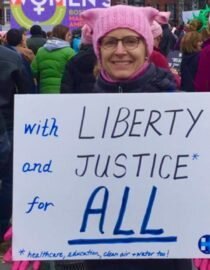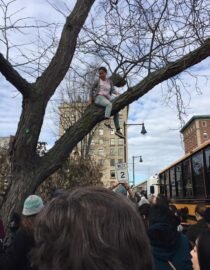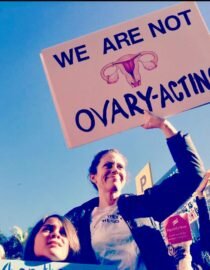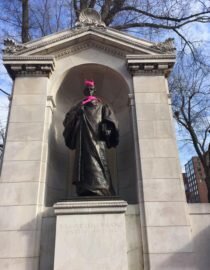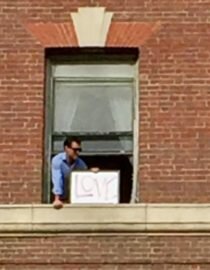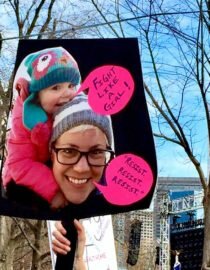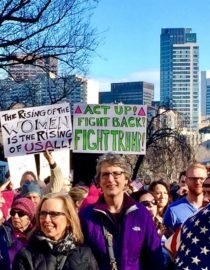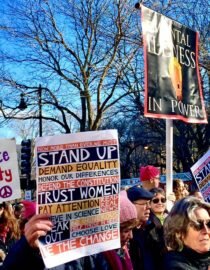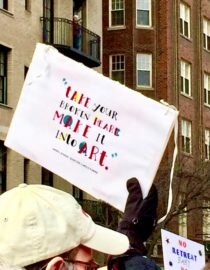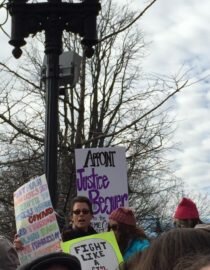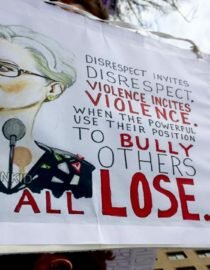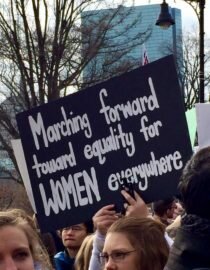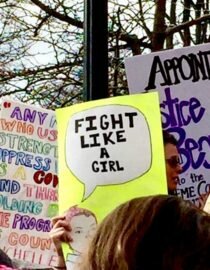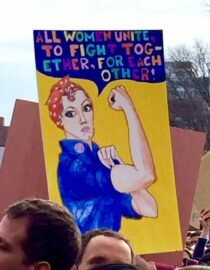-
Public
- SheGives
-
ShePartakes
Celebrate Boston’s Female Food + Beverage Professionals with Us!
-
SheThanks
Who’s Giving us Good Things
- SheIs
-
SheBlogs
Get the latest on SheGives
-
She Gets
Who’s Giving Us a Shoutout
- Contact Us
-
Newsletter -
Categories
-
Masthead
-
Kirstan Barnett
Editor-in-Chief
-
Katherine Taudvin
Editor
-
Carrie Greenway
Editor
-
Sarah Kess
Editor
-
Emma Brooks
Editor
-
Kirstan Barnett
-
Site Info

© 2024 SheGives. All Rights Reserved.
A Conversation with Evan Hubbard
Nonprofit features often focus on executive leadership. Conversations with Executive Directors are illuminating and important, providing a sense of organizational vision and leadership; it’s why we were delighted to interview Colby Swettberg, CEO of Silver Lining Mentoring. But program staff are uniquely positioned to speak to the essence of the work day to day, which is why we were delighted to chat with Evan Hubbard, Program Supervisor at Silver Lining Mentoring. Evan has been at Silver Lining since 2012, fulfilling his passion for working with youth in foster care, in particular the LGBTQ population. He shared his perspective on what makes Silver Lining’s approach unique, what makes for a great mentor, and how the organization got its name.

What’s a typical day like for you?
Every day is really different. As may be true for other jobs – particularly nonprofit jobs – every day here is so unique; they really vary. That’s why adaptability and flexibility are traits we really look for in our program coordinators; we need people who can keep up with the fast pace of what’s going on at the organization. I spend a lot of time supporting mentors: seeing how they’re doing, providing resources, and really just cheerleading them on. Depending on what’s going on with them and their mentee, we also provide clinical insights around different behaviors, or just more context into what youth may be experiencing as part of the foster care system. I also reach out to mentees to form our own unique bonds. They’re not just getting a mentor; they’re getting a whole team of adults who care about them and are committed to their success.
I also spend a lot of time screening and training mentors – the whole process takes about twelve hours total, which seems like a long time, but we really want to ensure that we’re getting folks who are fully on board and have the resources they need to be successful in the relationship. We want them to feel like they have the knowledge and the relationship with us at Silver Lining to reach out when they’re not sure how to respond to something or are looking for guidance with their mentee or their own self-care. Building relationships with other providers and program development are also major responsibilities for me – I’m always looking at ways we can adapt our programs to better serve our young people. There’s a need for this service and no one else is doing it. As the Program Supervisor for our Community Based Mentoring Program, I also spend a large chunk of my time providing supervision for our Program Coordinators, and managing the day to day functions and health of the program. I’ll top off the list with data entry, community engagement speaking opportunities, etc.
In addition to comprehensive training, what makes for a great mentor?
We’re looking for people share our values. We want to make sure that our mentors are long-term match links – people who are dedicated to being in a young person’s life over time. We’re looking for folks who are going to be here (geographically) for a couple of years at least, and who are patient, eager to learn, self-aware, and above all: people who are committed. Ultimately, we’re looking for people who can be a history keeper for our young people – someone who can say, “Hey, remember when you were twelve and totally obsessed with this thing?” And, “Remember when you were having a hard time with this thing? Look at how far you’ve come!” That requires being present and engaged in someone’s life over a long period of time.
What a great phrase: history keepers. Why do history keepers matter for young people?
I think it’s something we all want; we all want people who can provide us with a sense of belonging around who we are, and where we’ve been. Our lives are mapped by who we connect with in our life, where we go and who is important to us along the way. This is especially important for people in transformative years of development; for them, it’s critical to be connected to people who can bear witness, provide care and affection – someone who is with you throughout every part of your life. Having people like that creates this sense of “I’m worthy of care, love and affection – not just through this relationship, but as a fact.” For our young people, their mentor can be the one consistent tie to their sense of self when they are losing everything they know, moving multiple times per year, and often feeling incredibly alienated.
Did you have a mentor growing up?
I was a big band dork growing up – instead of sports, band was the big thing you did in my town. From the first time we had a band in our school system, which was 4th grade, a conductor who worked with high school students was coming to our concerts, saying “I want to see you in four years.” He would come to all of our concerts, even though he wasn’t the conductor, to say “I want to see you here – I want to see you on my stage.” I remember him saying that to me many times; it wasn’t because I was the best, but because he wanted to grow my potential; he wanted me to stay involved. In high school, he became a big part of my life. We were on the road often performing, and he knew a lot of what was going on for me. He knew when I was struggling in classes, he knew my family; he was someone that I knew I could talk to. There were definitely times I thought I was done, over high school, etc. and he said, “You can give up now, but I’m not going to give up on you.” That was incredibly powerful for me as a young person – to have that grounding and unconditional support; someone who saw my potential and held onto that even when I couldn’t see itAnd it wasn’t just me – he was a huge presence in our town; he would go to graduations and community events because he cared.
A lot of times our mentors here fill that role, which is incredible. They’re the ones that are showing up for young people. They’re the person who is going to softball games, competitions, shows, etc. One of our mentors told me about a transformative moment she experienced, actually, at her mentee’s softball game, where she realized, “If I wasn’t here, she’d have no one. I’m her “person”.” Her mentee leapt off the field and gave her a huge hug – saying she couldn’t believe her mentor had come. And her mentor’s thinking, of course I would come. Of course I would be here. When you think about that person who is there during major moments, like moving to a new residence, graduation, and in general navigating new experiences – our mentors are often filling that role for our young people- and that’s incredibly special.
How have young people shaped the program?
It’s really important to Silver Lining that we are a youth-focused organization, which means we don’t do anything “for” youth without their involvement. Everything is shaped by their insight and input. I think that’s really embodied in how we approached our name change a few years ago. We were founded under the name Adoption and Foster Care Mentoring. We heard from our mentees that they were really proud to be part of our family, and especially proud to introduce their mentors to other people out in the world. But some young people were saying, “Every time someone asks where my mentor is from, I have to talk about adoption and foster care.” Some people were fine sharing that part of their life experience in a really open way, but others just didn’t want to have to have that be the context of introducing their mentor. As an organization, we brought our young people into that process and decided we were going to rename ourselves. We said “We’re in our adolescence now” and need to respond to these emerging concerns. We polled our youth on what we meant to them, what our name should be reflective of, etc. During one of our brainstorming exercises, one of our mentees came up to us and asked for silver glitter. Someone offered the mentee gold, and they were adamant about wanting silver. They were drawing a rainbow, and outlined it in that silver glitter.The mentee said, “The world of foster care in my life is pretty dark. But my mentor and AFC – you’re my silver lining. My mentor makes life better. You give me hope for my future.” And we saw all of the youth in the room nodding their heads. We all just kind of looked around the table and went, “Yup, that’s it.”
In addition to our name, our Learn and Earn program came from seeing our young people getting ready to age out of care and trying to provide new resources for them. We’ve really crafted our policies around program that based on their feedback.
What’s on the horizon that you’re really excited about?
One of the things I’m the most excited about is to serve more and more young people. We’re going to be able to serve more young folks, which means we’re going to be able to innovate more. We know that there are many young people in the Boston region that could use services like Learn and Earn, and we are growing and developing to be able to meet the extensive need. I’m excited about us being bigger thought leaders and talking to other providers about our work and our models. We’re able to provide that sense of permanency, sense of belonging, what many young people in the foster care system lack.
There are amazing mentoring organizations, but the role Silver Lining plays is so unique. We’re targeting the foster care population in most need of support – these are folks who deserve community and need that, as we all do. We had a mentee who came in just last night and said, “I’ve got a biological family, but I don’t have a lot of connections to them. But I have a second family through Silver Lining.” We build that sense of connection through so many venues and programs, and I’m excited to bring something so fundamentally important – sense of belonging – to more young people in the Boston area.
Posted in News Leave a comment
Meet Colby Swettberg, ED of Silver Lining Mentoring

Colby Swettberg
Silver Lining Mentoring empowers youth in foster care to flourish through committed mentoring relationships and the development of essential life skills. We talked to their Executive Director, Colby Swettberg, about what drew her to youth in foster care, what makes Silver Lining Mentoring unique, and what’s in store for the organization next.
Q. You’ve been involved with causes supporting youth, in particular LGBTQ teens, and also have a background in education. What drew you to working with youth, and to make the transition from education to the social service/advocacy field?
A. I started my career as a high school English teacher, actually! In fact, when I graduated from high school the faculty named me “Most Likely to be an English Teacher,” and I thought “ that’s funny, but no way!” It turns out they were right: I taught at a public school outside of Philadelphia after graduating college. Interestingly, though, I found what I enjoyed most about my job was the time I got to spend with students before and after school when they would come and talk with me about their lives. As much as I loved teaching students how to hone their writing skills and about literature, what kept me up at night was the discussions that I would have with kids when they would share what was going on in their lives outside of the classroom.
The stories were multifold: it was a young person disclosing that he had been homeless and sleeping on a park bench for weeks; it was an exchange student who shared that she was living with a host family where there was severe substance abuse and she didn’t feel safe. All of it really stuck with me. I ended up going to graduate school in Boston for education, although I already had a sense I probably wasn’t going to return to the classroom. I ended up co-creating a film in grad school that got traction both nationally and locally. I was traveling and doing screenings in academic settings and human service agencies, including a big social service agency here in Boston. After a film screening, they offered me a job starting up a new group home for LGBTQ foster youth. It was an incredible honor to be part of the inaugural team and to develop a program from scratch – not to mention that it was the first co-ed LGBTQ group home in the country.
As a member of the LGBTQ community myself, it was really meaningful for me to be able to forge relationships with youth and offer them a safe space. I had always loved working with young people, particularly vulnerable populations, and through this work I learned about the foster care system. I ended up going back to school for a masters degree in social work. I just loved this population and knew that working in child welfare was going to be part of my life’s work.
Q. What’s the best part of your job?
A. The best part of my job is seeing young people define and achieve success for themselves – in both little and big moments. It might be hearing from a young person that they’ve landed their first job or that they’re moving into their first apartment. It might be hearing our youth talk about the trust they developed when they realized their mentor was going to keep showing up no matter what – and witnessing what happens when they know there’s someone in their corner. It might be going through program evaluations and seeing young people write that they want to stay connected to their mentor and our organization forever – that they consider Silver Lining to be their family. There are so many awesome parts of my job – I’m really lucky!
Q. What are you most excited about for Silver Lining Mentoring over the next five years?
I’m excited to serve more young people. We have a three year business plan with ambitious growth goals and I’m eager to follow the path we’ve mapped out to get there. We endeavor to serve the majority of young people in foster care in greater Boston who are most in need of mentors. We’re developing and iterating on our programs all the time, constantly looking for ways to improve, evolve, and partner. In particular, I’m really excited to grow our housing support program. Housing is a major issue when young people age out of foster care, because after they turn 18 and age out they simply don’t have places to live. Without support youth who age out of foster care frequently become homeless. We developed a partnership with a local housing organization called Caritas Communities that is opening its doors to our young people. We have some generous donors who have invested in this program and we’re excited to see it grow.
Q. Why is mentoring so important?
Youth in foster care have many needs. In a lot of ways, their needs are no different from those of any other young person. What they need more than anything is a consistent connection to a caring adult. For youth who aren’t in the foster care system, those connections to adults often come from families, communities, and schools. Youth in foster care aren’t finding consistent relationships in those settings because they’re being moved so frequently. Youth need someone in their corner who is going to keep showing up when the going gets rough, when a young person needs cheering on, to be there for them when they’re going through major milestones. Many times, our mentors are the only adult showing up for that kid’s soccer game or debate tournament or cheering for them at their high school graduation. Our youth frequently don’t have anyone to spend holidays with and may end up celebrating holidays with their mentor. In some cases at Silver Lining it is a mentor who ends up taking our youth to college and helping them settle into their freshman dorm.
In order to make those relationships possible and truly meaningful for both mentees and mentors, we do a huge amount of work on our end to recruit, screen and train mentors. Once a mentor has been screened and selected, we spend a lot of time providing individualized support. We want them to feel and know that we are shoulder to shoulder with them in the work of supporting youth. We think of our mentorships as a triangle: the young person is at the top, the mentor is the second corner and our staff is is the third, supporting both the mentee and the mentor. Our mentors don’t have to come into the program as youth development experts, but we expect our mentors to be youth centered, self-reflective, open to learning, and deeply committed.
Q. Silver Lining Mentoring works in partnership with other community organizations. How has this allowed you to do your work more effectively?
A. We are very grateful for our partnerships and wouldn’t be able to do our work in as comprehensive a way without them. An important part of partnership is knowing what you bring to the table and when to rely on the practice wisdom and resources from other organizations. We have terrific partners in a variety of settings – whether it’s help with mental health service referrals, housing, financial aid applications to college or employment – we rely on strong collaborators that share our values and seek to empower young people realize the success that they’ve defined for themselves.
Posted in News Leave a comment
SheGives Members Moved by Second Step’s Powerful Message
“You must have done something very wrong to make him behave that way.”
That is how one therapist reacted to Deb, a domestic abuse survivor, during a treatment session. Deb had just related how, during a recent outburst, her husband had thrown a television through a wall, broke furniture, and shattered windows in their house.
SheGives members were moved by Deb’s story at the final non-profit event of the year. Representing The Second Step, a non-profit on the SheGives slate, Deb shared her story of how she, a well-off, educated woman, first met her husband, a banking executive. She said, “There was a lot that I didn’t know about him, about red flags, and domestic violence relationships.”
She was trapped in the abusive relationship for decades before realizing that she needed to escape from what on the outside looked like an ideal life. But Deb struggled to find help from doctors and other professionals. “They didn’t see it,” she said. “They didn’t talk about abuse.”
That’s when she discovered The Second Step. There, she found one-on-one counseling, legal help, and safety planning during the most critical–and dangerous–period in an abusive relationship: when the survivor escapes the situation.
Founded in 1992 to help domestic abuse survivors find long-term housing, The Second Step provides comprehensive programming for survivors of domestic violence.
Since its founding, the non-profit has evolved to adapt to the complex needs of the people they serve. They offer residential programs, a therapeutic after school program, and youth and prevention programs.
It isn’t enough to help survivors escape abuse and find housing, though. “This is a community issue,” said The Second Step’s Deputy Director, Matthew Swoveland.
That is why they have also provided community programming since 2006 to help survivors overcome the long term consequences of abuse. The community programs provide a bridge from the moment of crisis to long-term mentoring and peer support.
It is these programs that give abuse survivors like Deb the type of sustained and long-term support so desperately needed: “[The Second Step] was where I began the hard work that ultimately led to my healing,” Deb said.
Deb described meeting women from all walks of life at The Second Step and learning that she was not alone. She continues to receive support and counseling, and has also had opportunities to give back to other survivors.
Deb implored SheGives members to continue supporting The Second Step and their essential work: last year, they housed 24 families and 43 children, and 240 adults and 374 children participated in community services programs.
She described a donation to The Second Step as “One of the wisest and most impactful” investments you can make. “I’m not overstating my situation when I tell you that The Second Step helped to save my life,” Deb said.
SheGives founder Kirstan Barnett also urged members to stay involved during this crucial time: “I know that everyone feels tapped out,” she said. “But now is the time to step up.”
You can learn more about the work that The Second Step is doing at their website.
Posted in blog, News, Our Events, SheGives Slate Leave a comment
WhoIsShe? SheGives Director of Programming and Operations Meghan Hargraves
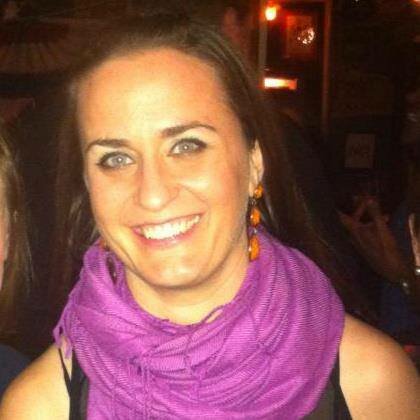
STAT BOX
SheGives Director of Programming and Operations since fall 2016
Runs the blog Bread & Ginger, as well as a catering company by the same name (you've tasted her delicious food at SheGives events!)
What is Bread & Ginger and how did it come about?
Bread & Ginger started because I have always had a lot to say about food, and I needed to spare my friends and family the pain of listening to me all the time, so I started writing it all down. It turned into a recipe blog that primarily my dad and grandmother read, and eventually landed me my first paid cooking gig when a friend of a friend recommended me to a colleague. For a long time it was a side gig – a break from my finance job – and in the last two years, I have been able to take it on “full time” and I couldn’t be happier. Food and cooking are my greatest joys, and now I get to share them with clients as well as friends. It couldn’t be better.
Who would be invited to your ideal dinner party?
Several years ago for a big birthday I rented a house in California and invited a bunch of women that I love to come with me. It was a group made up of a lot of different groups of friends, so I was a little nervous about everyone traveling together. It turns out we had a fantastic time and it was one of the greatest vacations I have ever taken. (We even reunited to go to Nashville six months later.) I think I would get that group back together again. All the laughs, conversation and entertainment I could possibly need. Or Beyonce, maybe I’d just invite Beyonce.
What book (or movie/play/tv show etc.) had a tremendous impact on you?
About 15 years ago I read Reading Lolita in Tehran. It’s the memoir of an Iranian professor living and teaching in Tehran during the revolution and forming an illegal bookclub with a group of women who found their rights and freedom drastically restricted. It discusses the books that they read and how the themes relate to their lives, societal changes and their goals and dreams. Barnes and Noble was doing online book clubs with authors and there was a huge group (mostly women) reading that book and communicating with the author and it was a great experience. The book taught me to really read, and to love my favorite books all over again. Reading was such an integral part of my childhood and something I always took for granted. This book made me rethink my relationship with books and reading.
What is your dream vacation?
This is nearly impossible, because I have so many places on my list, but if we are talking dream vacation, I think it would be to take a couple of months and eat my way through East Asia- Japan, China, Vietnam, South Korea and Thailand. I want to visit the cities and the countrysides, cook with locals and eat some incredibly impressive sushi.
Posted in WhoIsShe? Leave a comment
SheGives Members Get a Glimpse of the Foster Care System with Silver Lining Mentoring
For most foster children, every adult in their world is paid to be there.
Young people in foster care face difficult transitions over which they have no control. Many have survived abuse and neglect in their homes. Most move regularly to new communities, schools, and families. They usually lack someone in their lives who is there just to be with them.
Silver Lining Mentoring seeks to change that.
“It’s different when there’s an adult who’s there, not because it’s connected to a paycheck, but because they’re invested in that kid,” said Silver Lining Mentoring CEO Colby Swettberg at Tuesday night’s SheGives Boston non-profit presentation.
Since its inception in 2001, Silver Lining Mentoring has connected young people in foster care–often the neediest children living in group homes–with long term, volunteer adult mentors who provide the children with much-needed stability and counseling.
The mentors provide support for the kids, helping them cope with trauma and teaching them valuable life skills. And they’re there for the long haul, even after the kids age out of foster care system. “We get people what they need for as long as they need it,” Swettberg says.
This is in contrast with foster care support, which drops off when children turn 18. “When they turn 18, the rug is pulled out from under them. Find housing, navigate healthcare, find a job.”
Because of the lack of support after reaching adulthood, many young people who age out of foster care end up homeless or incarcerated. Others fight battles like substance abuse. That’s why at Silver Lining Mentoring, the mentor-mentee relationship lasts an average of 55 months, a number that is growing.
That’s also why the organization initiated Learn and Earn, a new program that teaches young people approaching 18 the life skills they will need well into adulthood. The program also gives them the opportunity to raise money that the organization matches.
Silver Lining Mentoring is also piloting a new housing program that provides mentees with safe, stable, and supportive housing for a full year after aging out of the foster care system.
But they still need your help. “We’re looking for ways to open doors to new communities who can help with mentoring,” Swettberg says. You can find more information about volunteering or getting your company involved here.
Mentors don’t have to be trained social workers, Swettberg says. They just need to be that one consistent adult who shows up. “They don’t have to have all the answers,” she says. They just need to make a commitment to being there.
Learn more about Silver Lining Mentoring at their website.
Check out our photo gallery from the event:
Posted in News Leave a comment
SheGives Community Marches for Equality
The SheGives community shows up. Our non-profits are on the frontline with those at risk and marginalized: Foster children. Homeless children. LGBT+ community. Women. Families affected by domestic violence. Immigrants. We march for all. #shegives#shemarches
Posted in News Leave a comment
Why Do I Keep Hearing About “Resiliency?”
Philanthropy loves its buzzwords. High-impact. Data-driven. Donor-centric. I know I’ve heard plenty, and certainly repeated more than a few. So if you have your ear to the ground in trends in the giving and foundation space, you’ve likely come into contact with a newer one: resilience. Most visibly helmed by the Rockefeller Foundation (through its 100 Resilient Cities Initiative, of which Boston has been a participant for the last couple of years), the language of resilience and resiliency have inundated the philanthropic world. Where did it come from? And where is it going? Finally, if and how does it relate to our work with SheGives?
International Development
The term and concept of resilience first emerged in the global development sector. The UN defines resiliency as “the ability to withstand unexpected events and quickly recover,” often within the contexts of natural or economic disasters. More recently, global concerns have shifted to building resiliency to the increasingly accelerated effects of climate change, the impact of which is forcing many regions of world to create new contingencies.
Urban Resilience
In more recent years, cities and urban planning have on the concept of resilience from a reactive response to natural or economic disasters to include proactive and holistic community development. Washington Monthly writes: “Economic gains, social cohesion, safer communities – these are what we call the “resilience dividend” – the idea that an investment in resilience makes a city better in the short-term, as well as the long run.” Philanthropic entities have partnered with government agencies, community-based organizations, and in some cases, the private sector. Rebuild by Design, for example, was a partnership between the U.S. Department of Housing and Urban Development and The Rockefeller Foundation in the form of a competition awarded ten grants for city planning and storm resilience projects in New York City. The awardees included teams of architects, engineers, scientists, and civic organizations – a uniquely collaborative call to action that elicited new innovations.
We have this model in our own backyard, too: thanks to funding from the Rockefeller’s 100 Resilient Cities Initiative, Dr. Atyia Martin was named in 2015 to be Boston’s Chief Resiliency Officer. Dr. Martin’s work aligns well with the more holistic (or “healthy community”) approach to urban resiliency, which demands sound policies across sectors: affordable housing, public safety, education, social services, transportation, and more. She works with multiple community-based organizations to create aligned strategies to make the city stronger, healthier, and more collaborative. (Check out the “Blueprint for Boston’s Resiliency Strategy” if you want to learn more!)
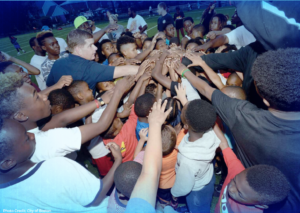
Image via 100 Resilient Cities: A PREVIEW OF THE PRINCIPLES & FRAMEWORK
FOR BOSTON’S RESILIENCE STRATEGY
Now the holistic, cross-sector concept of “resilience” has made its way into the education world, as schools, parents, and services are recognizing the importance of cultivating social and emotional skills in students – and investing in programming outside the schoolday to provide students and families with resources.
Worth the Buzz?
Whether the conversation is about response to a storm or the importance of nurturing empathy in students, the concept of resilience isn’t going anywhere. And sure, you can call it a buzzword. But to me, a broad concept like “resilience” making its way through different sectors offers an exciting opportunity for both funders and the organizations they support: to think more intentionally together about how to support students, families, and communities – grounded in the wisdom and specific context of those communities. It marks an abandonment of the notion that a single service or intervention will meet all of an individual or community’s needs. In this framework, funders can be more effective and trusted conveners, as well as thought leaders and issue area experts. Maybe we, as members of the SheGives community, can have a conversation about what we believe will make the Boston area more resilient, and continue the conversation with other funders and organizations about how we can work towards those ends together.
Posted in blog Leave a comment
SheGives Visits Music & Youth Clubhouse for First Event of Fourth Year

How is Music & Youth different from other non-profits?
That is what SheGives members and guests set out to learn during their visit to the Music & Youth clubhouse at the West End House in Allston, MA on Wednesday.
The West End House Boys and Girls Club hosts one of Music & Youth’s 16 clubhouses, fifteen of which are in Massachusetts. At each clubhouse, kids 10-18 take lessons in music theory and instruments, drawing on a variety of in-house resources such as recording studios, practice rooms, computers, iPad stations, and musical instruments. SheGives members toured the clubhouse and listened to some of the teens in the program perform an unplugged cover of Paramore’s “Decode.”
After the tour, CEO Gary Eichhorn spoke about his inspiration for starting Music & Youth, which he founded with his wife, Joan, 14 years ago. Joan and Gary wanted to make a difference for inner-city kids that did not have high-quality after-school programs. The kids who did not have access to these programs, Gary said, were often those who needed them most, including the most economically disadvantaged children in the Boston area.
Gary and Joan did not want to create their own organization, as they were afraid that it would take away funds from other non-profits, so they came up with a unique model for helping current organizations. They contacted organizations like the Boys and Girls Club and discovered that music programs for preteens and teens were in high demand, but were difficult to implement due to lack of funding.
Gary and Joan decided to help organizations solve the problem of how to create and implement a music program, with the focus on making them high-quality and self-sustaining: “We’re really building a community. We’re not just building a clubhouse and then walking away,” Gary said. Music & Youth provides startup money for the clubhouses and then continues to invest to ensure that they have up-to-date equipment – such as a new iPad station at the West End House.
The model has been highly successful. West End House CEO Kristin Rhuda credits the music clubhouse with the growth in teen participation in her non-profit’s programs, calling it a “magnet” for young adults. “We really did have an explosion [in teen participation],” she said.
Kristin is grateful to Music & Youth for creating what is now a vital part of the organization: “It’s kind of hard for me to remember way back [before Music & Youth] because now it’s such a part of who we are and what we do, and such a part of how kids grow socially and emotionally here,” she said.
You can learn more about Music & Youth and donate on their web site. Also, be sure to read our interview with CEO Gary Eichhorn here.
Posted in blog, News, Our Events Leave a comment
Meet Gary Eichhorn, CEO of Music & Youth

1. What about your job gets you up in the morning?
In five words, “It’s all about the kids.” I love to get to know them and watch them perform. I love hearing stories from the Music Clubhouse Directors about how music has changed so many lives – building self-confidence and self-esteem. I feel very fortunate to be a partner to so many amazing youth development organizations who do the great work that they do every day!
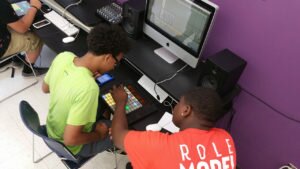
2. How has your organization changed in the last few years? What are you most excited about on the horizon?
We have doubled down on our efforts to leverage our knowledge of how to establish and sustain a high quality after-school music program for teens. We have made considerable investments in training materials, method books, design guides – all of which can be used by all of our Music Clubhouses.
I am very excited about the future. For our established clubhouses, we are investing in technology – the iPad is now a recording studio and teaching assistant! We are committed to ensure that our program stays on the leading edge of new musical recording and instruction techniques. We continue to invest in our Clubhouse Directors who have paid it forward with great new ideas and programming that we share with all of our Clubhouses. All in all, we have a very active and creative music community where everyone learns from each other and shares energy and excitement for our work of bringing music opportunities to underserved youth.

3. What is the most challenging element of your work?
Our organization is different and sometimes being different is hard! Our model is to exclusively work with Youth Development Partners like Boys & Girls Clubs and YMCA’s and “teach them to fish” – in other words, to empower them to change the lives through music. Working with partners is harder than doing things yourself – but the payoff is huge in terms of leverage and sustainability.
4. What story of impact really stays with you?
There are so many stories – in fact our website has a fairly extensive collection which I would encourage people to visit. For example, one that stays with me is a story about a young lady who became active at the Music Clubhouse. When she first started coming, she was shy and reserved. A few years later, you would not recognize her as she performed original songs to a packed house at her Club. What she overcame was not only being from a poor family, but one where both her mother and father were in jail. The Music Clubhouse became her vehicle for coping with a very difficult life.

5. What is your personal relationship to music?
I took guitar lessons for a couple of years when I was in junior high. I hated it! In fact, the music books I used are still being used today, but not by us, as we feel there are more engaging approaches for the population we are serving. Scales, theory, “two string polka” did not do it for me – so I quit. When I was 40, my mid-life crisis was not to buy a sports car but to go back to the guitar. I was very fortunate to start taking lessons from Jay Ford who now runs the Music Maker School in Acton, MA. His approach was to find out what kind of music I liked and to teach me to play a song – then fill in the theory later. I was hooked and over 20 years later, I still play just about every day. This approach, now with the fancy academic name “informal learning,” is the way we teach at the Music Clubhouses today.
Music is my constant companion, my way of dealing with stress, my way of relaxing. I can’t imagine my life without music!
Posted in blog, SheGives Slate Leave a comment

